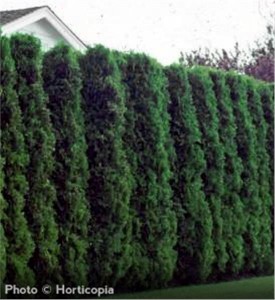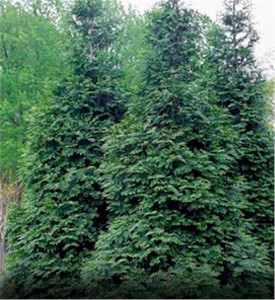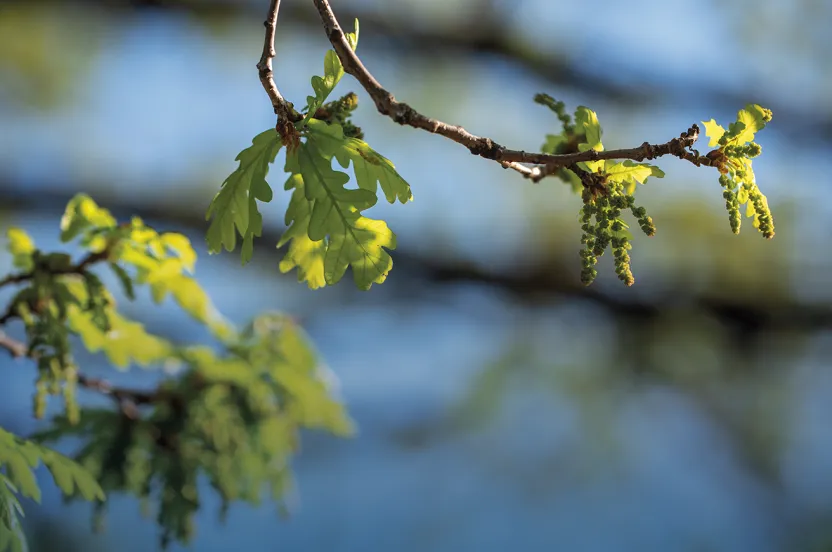thuja occidentalis
Arborvitaes are among the most popular trees to plant because of their numerous benefits, including their fast growth, tall heights, and year-round green foliage. In fact, arborvitae is a Latin form of the French phrase “l’abre de vie,” or “tree of life.” Arborvitaes prove this to be true through their versatility in tolerating a wide range of soils and climate conditions.
Arborvitae trees are a great choice if you’re looking to install a windbreak or natural privacy fence. There are numerous varieties to choose from, including American Arborvitae, Emerald Arborvitae and Green Giant Arborvitae. If you’re looking for fast growth then you might lean toward the green giant arborvitae, growing three feet a year and reaching up to 50-60 feet in height at maturity. If you don’t mind the wait and prefer something with a narrower spread, then you’ll appreciate the uniformity of American arborvitae.
Despite being low-maintenance, arborvitaes still need some care. Here are a few tree care tips to foster the best growth for your arborvitae in its early years.
Watch Ask an Arborist: Why Should I Plant Evergreens?
Environmental conditions for fast growth
Depending on the variety of arborvitae you select, you’ll want to be sure to plant trees approximately three feet apart to avoid root crowding and competition of nutrients and water; even trees don’t like to starve.
- Arborvitaes do best in soil that is well drained but moist, rich and deep
- pH of 6.0 (slightly acidic) to 8.0 (alkaline)
- Full sun exposure is ideal, but they will grow in partial shade
- Geographic regions with high humidity
Tree Pruning
Arborvitaes dense foliage provides sufficient privacy and at the same time are attractive additions to landscaping. Many arborvitaes take on a nice pyramid shape without pruning. If you must prune then limit it to once a year and keep the following in mind:
- Prune in the fall or early winter, if pruned in the summer the tips of the pruned branches may turn brown
- Never remove more than ¼ of a tree’s crown in a season
- Ideally, main side branches should be at least 1/3 smaller than the diameter of the trunk
It may not be a sour idea to read Keys to Good Pruning just to be sure you’re not crippling them.
Read Top 5 Evergreens Sold Through the Arbor Day Tree Nursery
Potential threats
- In times of drought, tree watering is important, but too much of a good thing can be bad so don’t overdo it (Proper Summer Watering of Trees has some helpful ideas)
- Young landscape trees will need protection from deer in many areas, consider a Tubex tree shelter to keep wildlife away
- Pest and Disease Problems: Bagworms are sometimes attracted to this species, but can be removed by hand in winter, or controlled with a biological pesticide
- In forest or land development situations, large openings can lead to windthrow—trees uprooted or broken by wind— due to its shallow root system
Whichever selection you go with be sure to nurture your tree with proper care.






